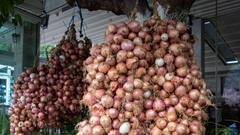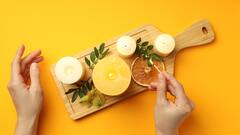Shubho Bijoya 2021: It’s Time For A Sweet Feast. Here Are 5 Quintessential Bengali Sweets Recipes For You
The period of Bijoya begins right after the Durga visarjan, and continues until Diwali. Bengalis wish each other ‘Shubho Bijoya’ during this time and are treated to sweets.

New Delhi: Ravan up in flames and Durga idols immersed at most places — the Durga Puja and Dussehra celebrations are now over for this year. For the traditional Bengali households across the world, however, only the festival has ended, not the festivities.
It is believed Durga departs after killing Mahishasura, symbolising the victory of good over evil. The celebration of ‘Bijoya’, meaning victory, hence, continues.
The period of Bijoya begins right after the visarjan (immersion) of the idol, and ends with Diwali, which comes 20 days later.
After the visarjan, people do a ‘kolakuli (Bengali term for hug)’ and distribute sweets among each other. In some parts of the state, people also release Neelkanth (Indian Roller) birds to mark peace descending on earth.
According to tradition, people visit friends and relatives’ houses during this time and exchange ‘Shubho Bijoya’ greetings. The younger generation touches the feet of the elders to seek blessings, and men do the ‘kolakuli’.
The custom mandates that the guests paying a visit to greet ‘Shubho Bijoya’ cannot be sent back without being fed something sweet.
While Bengalis are known for their sweet tooth, the households are usually never without sweets — especially around this time of the year so they stay ever prepared for anyone dropping in to wish a ‘Shubho Bijoya’.
While it is mostly ready-made sweets these days, many also prefer to make them at home.
Here are the recipes for five quintessential traditional Bengali homemade sweets. Do try them and let us know.
Narkel Naru
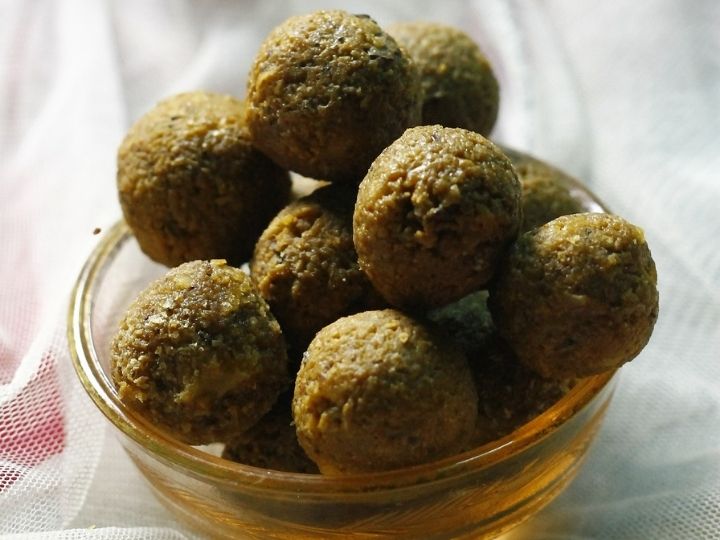
One can call it the most common sweet to be found in a Bengali home. The two-ingredient dish is easy to make, but needs skilled hands.
Ingredients
- Coconut: 2 cups, grated
- Jaggery: 1 cup, powdered or grated
Preparation
- Heat a heavy-bottom pan, preferably a kadahi (wok), and add the grated coconut.
- Stir for around 5 minutes.
- Now add the jaggery and mix it well.
- Keep stirring for 5-6 minutes, until the jaggery completely melts and the mixture thickens. Don’t cook too much, the nadus will get hard then.
- Apple some ghee in our palms and carefully take a spoonful of the mixture to form a ball.
- If it holds the shape, your mixture is ready. Turn off the heat.
- Now make rest of the nadus and keep them in a container after they cool down.
Murir Moa
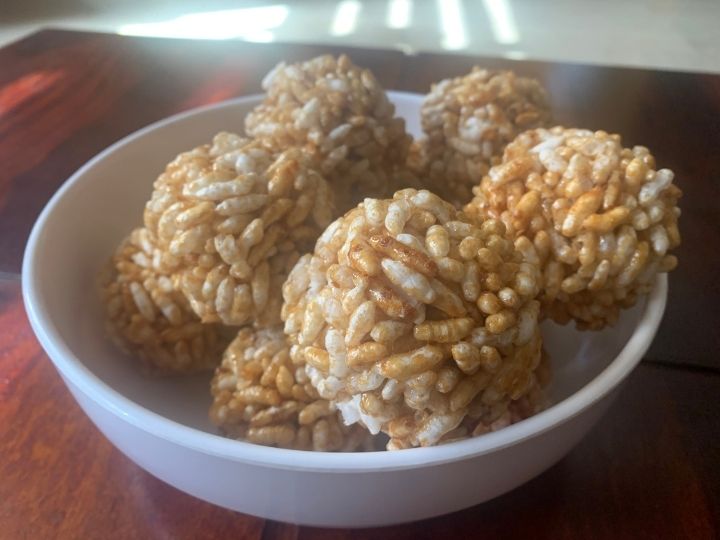
This is another very common sweet people snack on and also serve to guests, Bijoya or not. Again, you need only two ingredients to make this.
Ingredients
- Muri (puffed rice): 250g
- Jaggery: 200g
Preparation
- Heat the jaggery with a little bit (1/4th cup) of water.
- When it is thick and sticky, turn off the heat and add the puffed rice.
- Mix it well.
- Make laddoos after after applying some ghee/refind oil in your palms.
Gokul Pithe
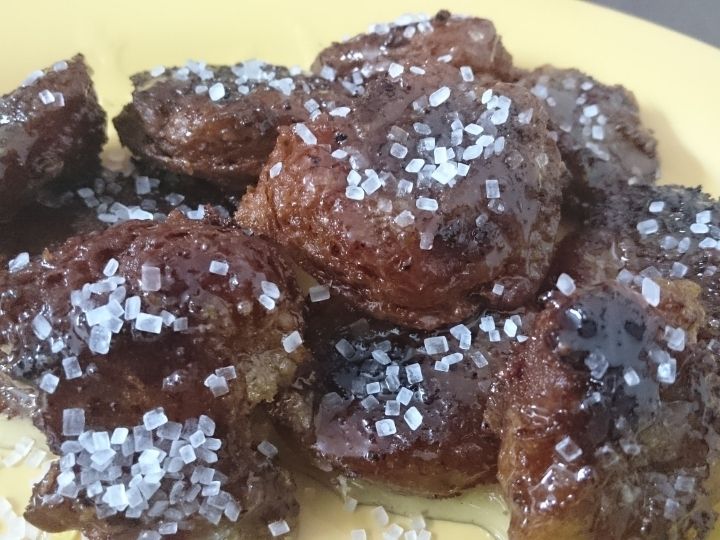
This is a recipe that can never go wrong. Don’t think of the calories, so you enjoy the sweet heaven guilt-free.
Ingredients
- Flour: 1/2 cup
- Rice flour: 1/2 cup
- Sooji/Rava (Semolina): 2 tablespoons
- Milk: Half a cup or as required
- Vegetable Oil/Ghee: To fry
- Soda bi-carb: 1/2 teaspoon
- Sugar: 1 cup
- Water: 3-4th cup
- Coconut: 2 cups, grated
- Jaggery: 1 cup, powdered or grated
Preparation
- Make a mixture out of the coconut and the jaggery (read Narkel Naru recipe) and keep aside.
- Now prepare a batter mixing the flours and sooji with milk, adding a spoonful of ghee.
- The milk should be at room temperature, not hot or chilled.
- Rest the batter for 15 minutes.
- Now make a thick sugar syrup using the sugar and the water.
- Take the coconut mixture in your palms and make round flattened pieces out of them
- Dip them in the batter and deep-fry till they are golden brown.
- Once they cool down a bit, put them in the sugar syrup.
- Take them out once they get a coat of the syrup.
- Sprinkle some granulated sugar over them.
- Gokul Pithe is ready to serve
Paatishapta

Patishapta is traditionally made in Bengali households during “Poush Parbon’, around the time of ‘Makar Sankranti’. But it’s a very popular dish and no one can resist the temptation to make and savour it during the rest of the year. Here goes the recipe
Ingredients
- Fine Rava/Sooji: 2 cups
- Maida: 1 cup and a half
- Sugar: 2 tablespoons
- Baking soda: ½ teaspoon
- Milk: 3 cups (approx)
- Oil: To fry
- Coconut: 2 cups, grated
- Jaggery: 1 cup, powdered or grated
Preparation
- Mix the rava and maida with 2 cups of milk and sugar.
- Let it rest for at least 2 hours.
- Make the coconut-jaggery mixture (refer to the Narkel Nadu recipe) and set aside.
- Now take the sooji-maida batter and mix it again. The consistency should be very smooth.
- If it’s too dry, add some more milk. The consistency should be conducive to make super thin pancakes.
- Heat a griddle and grease it.
- Spread the batter thin, and wait till it firms up. Don’t flip.
- Once the top side is dry, spread the coconut-jaggery mixture and roll it up.
- Paatishapta is ready to serve, hot or cold. It tastes best with rabri or kheer.
Puli Pithe

This is one of the oldest traditional desserts to be made in Bengali homes. Usually a Makar Sankranti special, like paatishapta, Puli Pithe is a little complicated to make and needs skill and patience.
Ingredients
- Milk: 1 litre, full cream
- Sugar: 1/2 cup
- Cardamom: 4-5
- Rice powder: 2 cups
- Coconut: 1 cup, grated
- Jaggery: 200g
- Water: to make the dough
Preparation
- Once again, make the Narkel Naru mixture (recipe mentioned above) and keep aside.
- Take the milk in a wide pan and bring it to boil. Let it simmer, stirring it frequently.
- Now take a big bowl and make a dough out of the rice powder using hot water.
- Make small balls from the dough and roll it out.
- Put a spoonful of the coconut-jaggery mixture in the middle and roll it over, sealing the sides. The shape should resemble a momo or a gujiya.
- Make dumplings out of the rest of the dough and mixture and keep aside.
- Once the boiling milk is reduced to half, add the sugar.
- Let it boil for some more time.
- Add the rice dumplings now and let it cook in the milk for around 10 minutes.
- Stir carefully to ensure the tender dumplings don’t break.
- Cook until the dumplings start floating. The colour will change a bit.
- Turn off the heat.
- Let it cool and serve.
Trending News
Top Headlines














